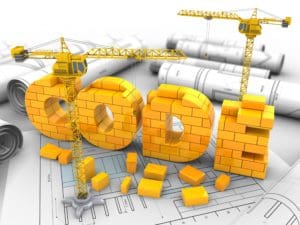
We’ve taken a look at the responsibilities associated with hazardous chemicals (OSHA), hazardous materials (DOT) and hazardous substances (EPA), however, it is easy to overlook how the presence of hazards can affect aspects of your workplace.
Thus far, the compliance we’ve discussed provides regulation from the perspective of the materials, such as with the transportation of hazardous materials and chemical safety with SDS and standardized chemical labeling. The codes being discussed in this section of our series will then serve to provide insight into the responsibilities necessary for compliance with the facility itself, such as with its construction and during various inspections or audits.
As such, the intent of this installment in our series is to present a basic outline of the building and fire codes in terms of responsibility and compliance.
Who is responsible for prescribing the hazardous building and fire codes and where can I find them?
Ownership of these codes usually lies at the local level, such as with the city or county governments, but could be at a state level for rural areas or areas between local municipalities.
The best starting place would be the local government, which should be able to direct you to the current codes or specify which set of codes were adopted. Other sources can include local building contractors, architects, and the local fire department. Identifying which codes are in effect is important because the codes are generally comprised of requirements taken from one or more sources to create the desired level of safety.
Organizations, such as the National Fire Prevention Association or the International Code Council, provide volumes of industrial codes, including building and fire codes, and intend to ensure a safe workplace. Further, codes may be associated with a year to identify when changes would have been required in relation to when construction or repairs were performed.
For example, if a building was constructed in 1990, it may be subject to the 1990 building codes unless portions of the structure were added or repaired which would require them to comply with the current codes. In other words, your facility may be subject to an older revision or even multiple revisions of the codes. It’s important to note that the basic codes may be proprietary to a code company which means you may have to purchase access to the codes.
How can I determine what constitutes a hazard?
Once you know what codes are applicable to your facility and its location, you need to determine what constitutes a hazard in terms of the hazardous building and fire codes, as well as local emergency response since local codes, local emergency response and even insurance may identify what is a reportable hazard differently.
Often, the codes identify hazards in terms of hazardous chemicals as prescribed by OSHA though there are those that define hazardous in terms of hazardous materials as defined by the DOT. This distinction is paramount since the threshold for being a hazardous chemical is much broader than those that define hazardous materials.
You should now have a better basic understanding of where to find the hazardous building and fire codes and how to determine the applicability of your hazardous inventory in terms of the products. In the next installment, we’ll look at facility designations, the applicable hazardous inventory requirements, and restrictions based on those designations.


